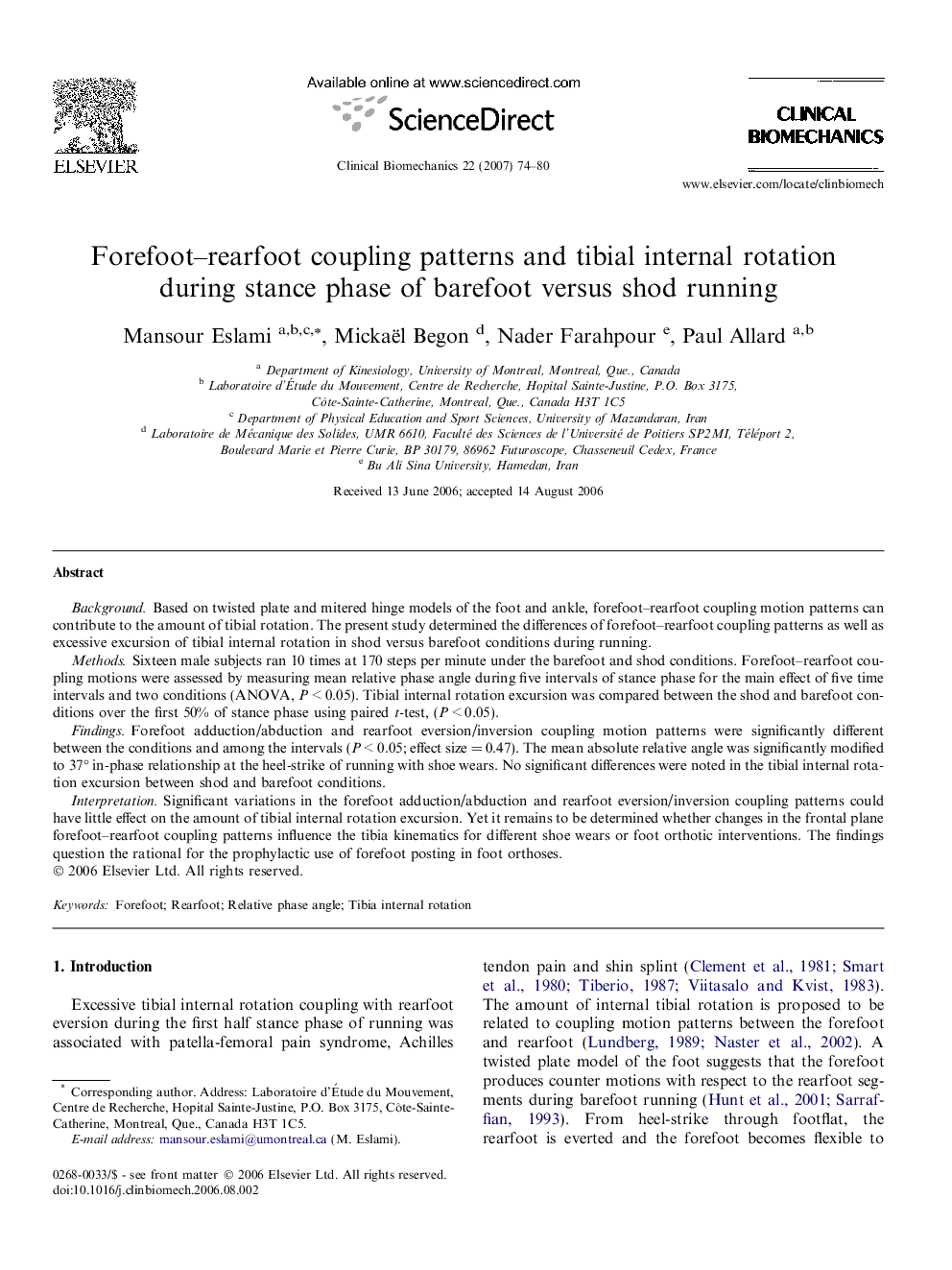| Article ID | Journal | Published Year | Pages | File Type |
|---|---|---|---|---|
| 4051794 | Clinical Biomechanics | 2007 | 7 Pages |
BackgroundBased on twisted plate and mitered hinge models of the foot and ankle, forefoot–rearfoot coupling motion patterns can contribute to the amount of tibial rotation. The present study determined the differences of forefoot–rearfoot coupling patterns as well as excessive excursion of tibial internal rotation in shod versus barefoot conditions during running.MethodsSixteen male subjects ran 10 times at 170 steps per minute under the barefoot and shod conditions. Forefoot–rearfoot coupling motions were assessed by measuring mean relative phase angle during five intervals of stance phase for the main effect of five time intervals and two conditions (ANOVA, P < 0.05). Tibial internal rotation excursion was compared between the shod and barefoot conditions over the first 50% of stance phase using paired t-test, (P < 0.05).FindingsForefoot adduction/abduction and rearfoot eversion/inversion coupling motion patterns were significantly different between the conditions and among the intervals (P < 0.05; effect size = 0.47). The mean absolute relative angle was significantly modified to 37° in-phase relationship at the heel-strike of running with shoe wears. No significant differences were noted in the tibial internal rotation excursion between shod and barefoot conditions.InterpretationSignificant variations in the forefoot adduction/abduction and rearfoot eversion/inversion coupling patterns could have little effect on the amount of tibial internal rotation excursion. Yet it remains to be determined whether changes in the frontal plane forefoot–rearfoot coupling patterns influence the tibia kinematics for different shoe wears or foot orthotic interventions. The findings question the rational for the prophylactic use of forefoot posting in foot orthoses.
